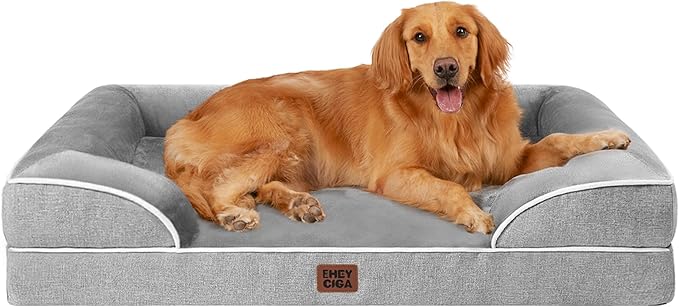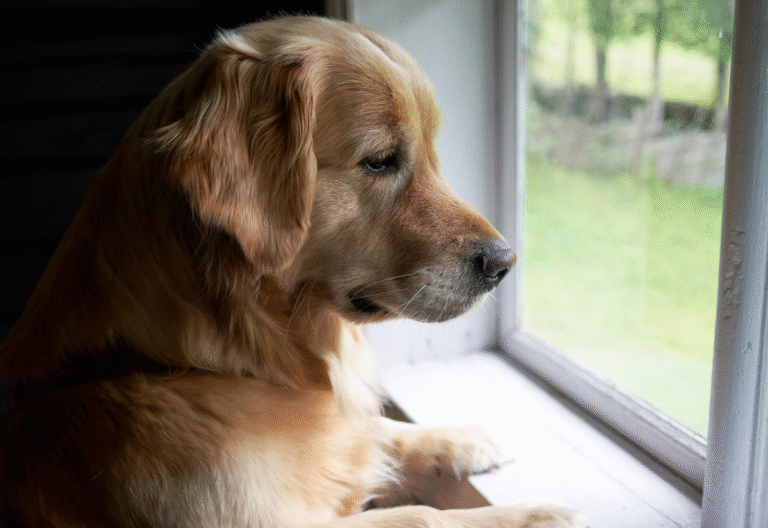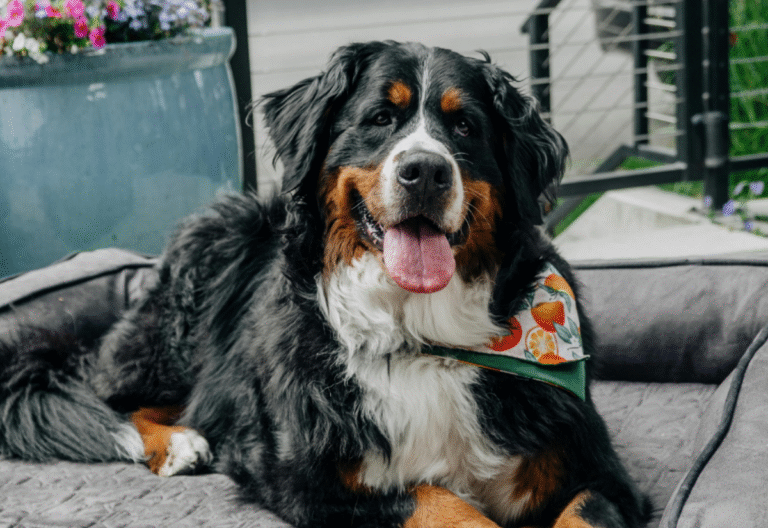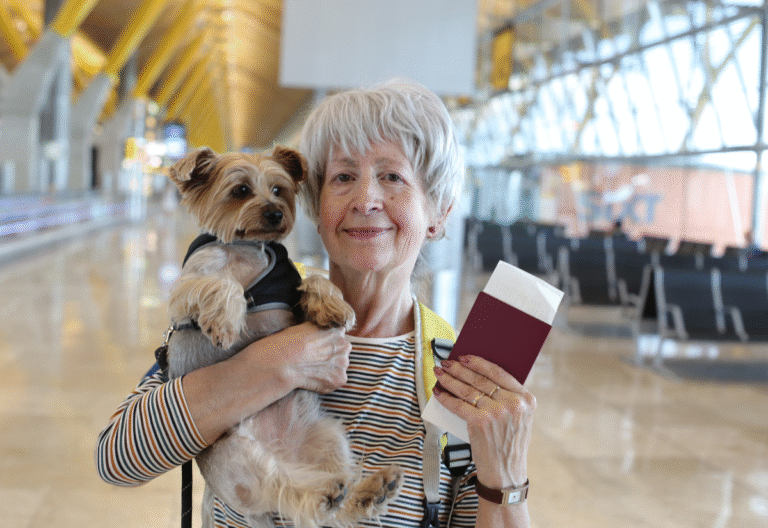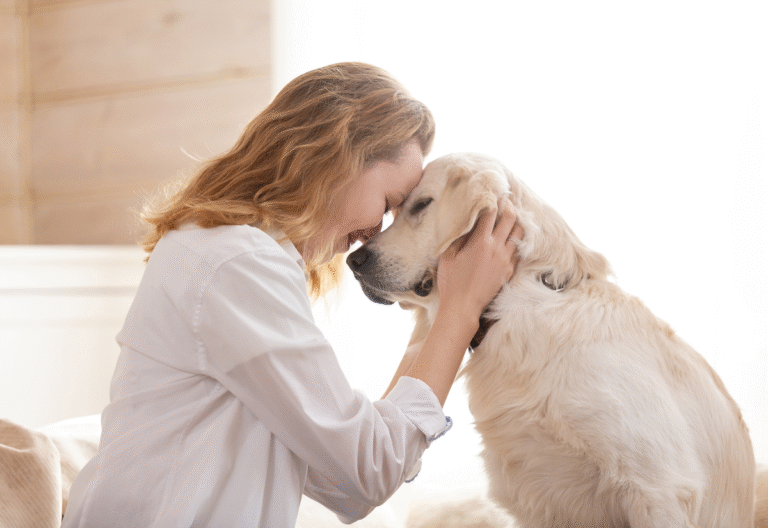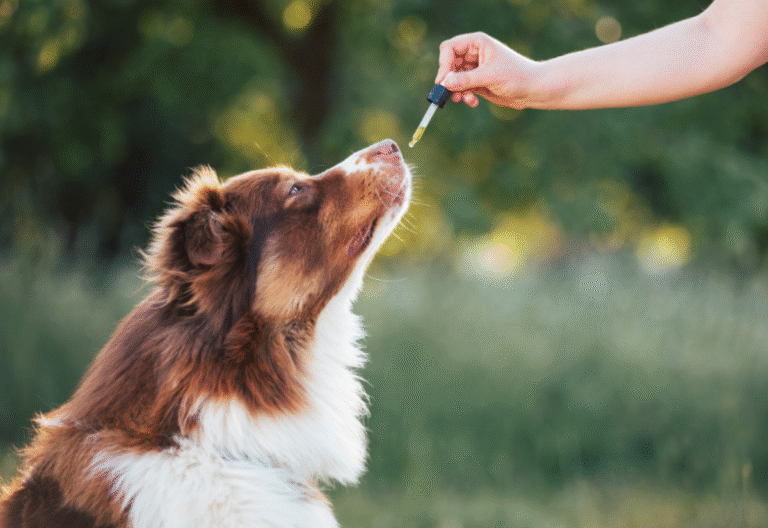How to Comfort a Dying Dog at Home: A Gentle Guide for Their Final Days
Saying goodbye to your dog is one of the most painful things you’ll ever face. Our dogs give us years of loyalty, laughter, and unconditional love—and when their final days arrive, all we want is for them to feel safe, loved, and free from pain.
If your senior dog is nearing the end of life, you may be wondering how to comfort a dying dog at home in a way that honors your bond and eases their journey. While nothing can take away the sadness, there are small, meaningful ways to make a dying dog comfortable while also preparing yourself for the days ahead.

What Are the Signs That My Dog Is Nearing Death?
Every dog’s passing is unique, but some common signs may tell you the end is near:
- Sleeping most of the day and seeming very tired
- Loss of interest in food, treats, or water
- Difficulty walking, standing, or breathing
- Choosing to be alone more often
- Labored or irregular breathing patterns
- Loss of bladder or bowel control
If you notice these changes, your veterinarian can confirm whether your dog is in their final stage of life and help guide you on how to make a dog comfortable when dying.
Signs of Pain and Discomfort
Dogs can be stoic, hiding their pain until it becomes more obvious. Watch for:
- Heavy panting or struggling to catch their breath
- Whimpering or unusual vocal sounds
- Restlessness or inability to find a comfortable position
- Avoiding touch or guarding a certain area of their body
If you see these signs, your vet may be able to adjust medications or suggest other ways to help.
Recognizing Pain and Discomfort

Dogs often try to hide their pain. Watch for:
- Heavy panting even when resting
- Whining, whimpering, or unusual sounds
- Restlessness or constant shifting
- Avoiding touch or guarding an area of the body
If you see these signs, contact your vet—they may adjust medications or suggest other comfort measures.
Managing Common Symptoms at Home
In your dog’s final days, certain symptoms can be eased with simple changes:
- Labored Breathing: Keep the room cool, use a gentle fan, and ask your vet about oxygen support.
- Loss of Appetite: Offer small portions of soft, aromatic foods like chicken, scrambled eggs, or bone broth. Never force-feed.
- Urinary Incontinence: Use absorbent pads or washable bedding, and clean your dog gently to prevent irritation.
These adjustments can make a big difference in how to comfort a dying dog at home.
Helpful Products for Comfort and Care
Some products can make your dog’s last days more comfortable and help you care for them with ease:
- Orthopedic or Memory Foam Dog Bed: Supports sore joints and prevents pressure sores.
- Waterproof Bed Covers & Washable Blankets: Keep bedding clean and dry with minimal effort.
- Dog Support Sling or Harness: Helps you lift and steady your dog without straining them.
- Absorbent Pee Pads: Useful for incontinence or accidents, especially overnight.
- Pet-Safe Heating Pad or Heated Blanket: Keeps your dog warm if they have trouble regulating body temperature.
- Raised Food & Water Bowls: Easier for dogs with arthritis or weakness.
- Calming Aids: Products like anxiety wraps, pheromone diffusers, or soft calming music can reduce stress.
These aren’t “must-haves,” but they can make a noticeable difference in quality of life.
The Role of Hospice or Palliative Care
Pet hospice and palliative care focus on making the last days or weeks as comfortable as possible. This may include:
- Pain relief and symptom management
- Mobility support like ramps or harnesses
- Gentle grooming to keep your dog clean and comfortable
- In-home visits so they can stay where they feel safe
Ask your vet if these services are available in your area—they can be a huge help for both you and your dog.
The Best Care to Offer a Dying Dog

When time is short, every small act of love matters. Try to:
- Keep them warm and cozy in a familiar space.
- Speak softly and let them hear your voice.
- Be gentle when helping them move.
- Spend quiet moments together—your presence is more comforting than you might think.
How to Prepare Yourself as an Owner
Caring for a dying dog is emotionally exhausting, but you don’t have to do it alone.
- Talk to your vet about what to expect so there are fewer surprises.
- Reach out to friends, family, or support groups—let someone else bring you a meal or walk your other pets.
- Have a plan for medications, vet visits, and what you’ll do when the time comes.
- Give yourself permission to take short breaks—you’ll be a better caregiver if you also care for yourself.
How to Talk to Children About the Death of a Pet
Kids grieve in their own way, and they deserve honest, gentle explanations.
- Use clear language—saying “passed away” instead of “went to sleep” helps avoid confusion.
- Encourage them to share their feelings and ask questions.
- Create a memory together—draw a picture, make a scrapbook, or plant a tree in your dog’s honor.
The Grieving Process for Owners
The grief often starts before your dog is gone, and it may last longer than you expect. Some days will feel harder than others.
- Let yourself cry and feel whatever comes.
- Talk to people who understand, like friends or pet loss support groups.
- Remember your dog with love—through photos, stories, or a special keepsake.
Grief is not a sign of weakness. It’s proof of how deeply you loved.
Quick Comfort Checklist for a Dying Dog at Home
- Soft, supportive bed in a quiet space
- Fresh water within easy reach
- Gentle petting and a calm voice
- Warm blankets or a heating pad (pet-safe)
- Regular vet check-ins or hospice support
- Favorite toy or blanket nearby

